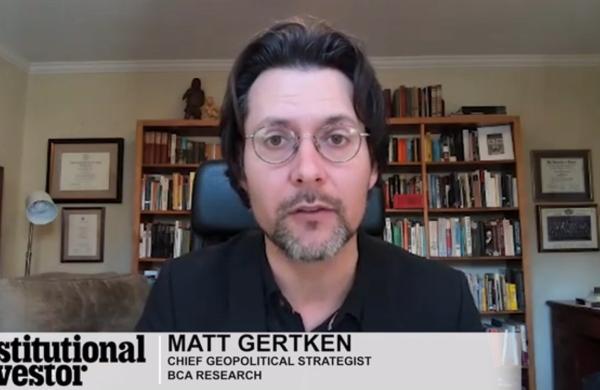For a long time Kenneth Lay managed to evade hard truths. As chairman and chief executive of Enron Corp., he publicly maintained that everything was fine with the company, even as its illegal deals were collapsing. After a jury found him guilty in federal court on May 25 of ten counts of conspiracy and fraud, he proclaimed his innocence and planned to appeal. Lay managed to stay out of jail while insisting he couldn't afford to make his bail. (His children pledged their property for the $5 million bond.)
With his sudden death on July 5, of a heart attack at his house in Aspen, Colorado, Lay even managed, technically, to evade conviction. Because he had not been sentenced - that was scheduled for October 23 - and had not exhausted his legal appeals, the jury's guilty verdict did not ultimately result in a conviction. As a result of that technicality, it's as if the trial and verdict never happened. In the eyes of the legal establishment, Lay is not, and never can be, a convicted felon.
But if Lay is gone, the wrath - and the lawsuits - of participants in Enron's retirement plans, who collectively lost more than $2 billion when the company collapsed, go on. His death hampers those lawsuits only slightly, and any disadvantage it causes to litigation is more than compensated for by the powerful club that the retirement plan plaintiffs gained from the May 25 guilty verdict of Lay's co-defendant, former chief executive Jeffrey Skilling.
At issue is whether there will be enough money from Lay's estate and from Skilling - who is appealing his verdict - to satisfy the tens of thousands of claims in both the retirement plan ERISA cases and in lawsuits filed by other investors. Either way, the notoriety of Lay and Enron could have far-reaching ramifications for other ERISA lawsuits and for the way 401(k) plans are run.
"Just because you die, you don't avoid your debts," points out Ronald Kilgard, an attorney with the Phoenix law firm Keller Rohrback, which represents some 25,000 plaintiffs who belonged to Enron's 401(k), cash balance and employee stock-ownership plans, in lawsuits against Lay and Skilling. He filed a motion on July 24 to substitute Lay's estate as the defendant.
In the criminal cases Skilling was convicted of 19 counts of conspiracy, fraud, false statements and insider trading, mainly pertaining to the accusation that he repeatedly and publicly lied about Enron's tenuous financial condition and concealed the accounting gimmicks behind it. (Lay was convicted of securities fraud, wire fraud, bank fraud and conspiracy, based on similar charges.) During the 11 months before the company filed for bankruptcy in December 2001, its stock plunged from $83.13 a share to less than $10.
Meanwhile, the retirement plan lawsuits contend that Enron corporate honchos violated their fiduciary duty to the three plans by failing to warn participants about the riskiness of their investments in company stock and by permitting some 60 percent of the plans' assets to be invested in Enron shares.
By now most of the lawsuits related to the retirement plans have been settled. According to Kilgard, plaintiffs have won more than $265 million from Enron itself, the plan's administrative committee, the accounting firm Arthur Andersen, plan trustee Northern Trust Corp. and other defendants. The case against Skilling and Lay is the main one still unresolved.
(Attorneys for the two former executives declined to comment for this story because the lawsuit is still in litigation. But, in previously published news stories, Lay's attorney, Michael Birrer of Dallas law firm Carrington, Coleman, Sloman & Blumenthal, has said that Lay was not responsible for the company's 401(k) plan.)
Before Lay's death, Kilgard and other experts on bankruptcy believed that the criminal convictions strengthened the case for the ERISA plaintiffs. "One of the issues is whether the fiduciaries of the plan knew that company stock was an imprudent retirement investment for rank-and-file employees," Kilgard says. "The conviction establishes in a variety of ways that Skilling and Lay knew about and participated in the corporate misconduct, and it was that misconduct that made Enron an unsuitable retirement investment."
Martin Sheehan, a bankruptcy lawyer at Wheeling, West Virginia-based law firm Sheehan & Nugent, agrees. "I would rather sue someone who has been convicted," he says. "It certainly affects their credibility." Since the standard of proof in a civil lawsuit is less stringent than in a criminal case, any evidence that was strong enough to convict Lay and Skilling presumably would be strong enough to help win a civil verdict.
Now, however, Lay's conviction can't be used as evidence against his estate. Skilling's conviction, though, is still allowable as evidence, and even Lay's conviction won't be totally wasted. "They only have to prove the things that the government originally proved to the jury," Sheehan points out. "They have a road map to do that."
Kilgard expects that Lay's estate and Skilling will settle, as the other defendants have done. But the conviction could actually make that tougher. That's because Skilling will likely insist that any settlement exclude an admission of wrongdoing, says Samuel Buell, who led the federal prosecution against Lay and Skilling and is now an associate professor at Washington University School of Law in St. Louis. Even after the trial the two men "continued to claim that they didn't do anything wrong," he points out.
But the biggest roadblock could be financial. "There are probably lawsuits against Lay and Skilling for more money than they have," Sheehan says.
To get their money, the retirement plan plaintiffs will have to wait in a long line. Former Enron shareholders and the U.S. Department of Labor are seeking billions of dollars in restitution. Just days before Lay's death, the Justice Department had moved to seize a total of $183 million from the two. Moreover, Skilling's attorney, Daniel Petrocelli of Los Angeles firm O'Melveny & Myers, has said that Skilling owes his lawyers "tens of millions of dollars." (The two executives spent an estimated $70 million combined on their defense.)
It's not clear where the money to pay all these claims will come from. Enron's insurance has been depleted by other settlements. Skilling's assets are estimated at $50 million in cash and securities, plus real estate valued at more than $5 million. Lay owned a condo in Houston whose worth has been estimated at $1.5 million to $5 million. (He claimed to be $250,000 in debt, but after his death it was reported that he had an investment account at Goldman, Sachs & Co. worth $6.3 million.)
Some of the claims will be decided at Skilling's sentencing next month before U.S. District Court Judge Sim Lake. Kilgard hopes the judge will work out a three-way split among the government, shareholders and his own clients, similar to what happened in the fraud case against WorldCom two years ago.
To some degree, the issues raised by the Enron plaintiffs mirror charges leveled at other employers where 401(k) participants' money was tied up in company stock. Investors in those cases have typically protested restrictions on diversifying out of the stock and sometimes charged fiduciary conflict-of-interest. Nevertheless, some experts think the Skilling conviction (or the voided one of Lay) will not have any impact on other pending cases. "These were criminals," says David Wray, president of the Profit Sharing/401(k) Council of America, a trade group for 401(k) plans. "All those other companies are not managed by criminals."
But in key ways the Enron cases have already had an impact. For one thing, 401(k) plans increasingly are eschewing their own companies' stock. In a survey of more than 450 big companies last year, Lincolnshire, Illinois-based Hewitt Associates found that respondents had loosened their restrictions in the preceding four years to allow participants to more easily diversify out of their employer's stock. For instance, 46 percent now let employees transfer out at any time, compared with just 15 percent in 2001. In 2001, 19 percent allowed no such diversification, a figure that shrank to 4 percent in 2005.
The convictions also have prompted some rethinking about fiduciary duty. "You have people who are plan fiduciaries who also might be company insiders, and that puts those people in an almost impossible situation," says Wray. "They can't reveal information that they know in a nonpublic way because all stockholders are to receive the same information at the same time. On the other hand, they are fiduciaries of the plan, and if they know something material is going to happen, they should be making a decision about plan assets."
Alex Sussman, who retired this summer as the national director of the retirement practice at New York-based consulting firm Segal Co., says that his former colleagues and other benefits experts have been discussing a possible solution to these conflicts - hiring an independent third party, such as a bank or investment adviser with no previous connection to the plan, as the fiduciary. "They would be responsible for continually reviewing the investment options or at least for overseeing the company stock," Sussman suggests.
"When you have news like the head of Enron being sentenced to jail," he adds, "it brings to the spotlight what can happen when plans mandate investments in company stock."





